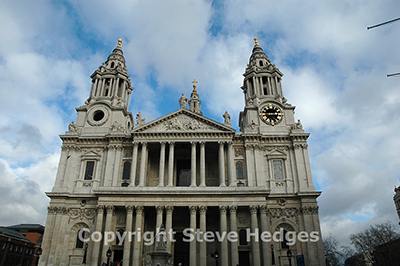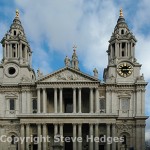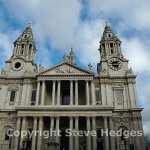On Saturday I will be running my last location workshop of the year 2014, although I still have a few classroom courses and camera club talks left to do. I will be in London on the south bank of the Thames with a group of photographers. So with this in mind I thought it would be good to write a blog that touches perspective in relationship to photographing buildings.
Any city is a great place for photography and I think London is particularly rewarding. The architecture ranges from the strictly functional, giving the photographer quite a task to portray them in a visually interesting way, to many buildings that are works of art in their own right. The architect uses glass, steel, bricks and concrete instead of paint and canvas to create a masterpiece.
Architectural photography is no different than many other types of photography. You are taking a three-dimensional object and reproducing it as a two-dimensional image. To create a successful image, you need to create a feeling of depth and space using many compositional tools, such as the rule of thirds, diagonal lines, leading lines and the the use of light and shade. In fact, buildings can offer the most fantastic leading lines, gentle curves, bold lines and shapes. Emphasize the flow of these lines to create a dramatic composition.
One of the most important considerations is perspective. Artists have been concerned with perspective for centuries and now so are photographers. So, what is perspective? Well, objects nearer to us appear bigger than similar sized objects that are further away from us. In reality, they are the same size. The nearer one just appears bigger. Parallel lines appear to get closer together, the further away they are. So perspective is how the human eye relates to objects within its field of view. For us photographers, perspective plays a vital part in the image-making process. When concentrating on architectural photography, linear perspective is what we are most concerned about.
Linear perspective is where parallel lines appear to get closer, the further away they are from the camera. Does this matter? Yes, because if you use the properties of linear perspective correctly, dynamic compositions can be created. Used on the wrong type of subject or composition and the viewer will feel almost seasick.
Linear perspective is so important in architectural photography because there are so many straight lines and geometrical shapes present in the average building. We know how a structure should look, so if it’s portrayed in an unnatural perspective there has to be a good artistic reason for doing so.
Linear perspective is also vital because you are concerned with vertical linear perspective as well as horizontal linear perspective when it comes to architectural photography.
We’re going to look at vertical linear perspective in this blog.
Many photographs of tall buildings especially suffer from linear distortion. This is where they appear to be toppling backwards and are also getting thinner as they rise up. The reason for this is that the photographer lifted the camera up to include all of the building and in doing so the film sensor plane is not parallel to the face of the building and distortion occurs. This distortion is not always a bad thing. It can be used creatively as part of the image’s design. Dynamic converging lines are excellent for leading the viewer through the image.
- Fig 6 No distortion
- Fig 5 Perspective distortion
Look at Fig 5. You will clearly see linear distortion. Because the building is an older type, the linear distortion is very unflattering. In Fig 6 the distortion has been corrected using Adobe Photoshop resulting in a far more pleasing result.
Look at the picture above. Vertical linear distortion is clearly present. The building is wide at the bottom and tapers in as it rises. There are many occasions where linear distortion is a really important compositional tool. The most important thing is to get in really close to your subject so that the perspective distortion is really exaggerated. This leaves the viewer in no doubt that the converging lines have been used on purpose.
NOTE:
Remember, the wider angle of the lens, the greater the distortion will be.
HOW TO AVOID VERTICAL LINEAR DISTORTION
1. Move further away from the subject so that you don’t have to tilt the camera to fit the whole building in.
2. Use a wider focal length (for the same reason as above).
3. Leave some of the building out.
4. Use a tilt-and-shift lens
5. Correct distortion post-production using photo editing software.
TILT AND SHIFT LENSES (P.C. – PERSPECTIVE CONTROL)
These are special lenses where the front element can be shifted between 8 and 12 degrees from the central axis. The front element can be moved from side-to-side as well as up or down. This gives the architectural photographer far more flexibility when composing a tricky shot. Therefore, to fit more of a tall building into the image, you should shift the front element up. This now includes more of the building without tilting the lens. Therefore, linear distortion is averted. Do you need a P.C. lens? Unless you intend to specialize in architectural photography, the answer is probably no. P.C. lenses are quite expensive and very specialist. In any case, many cases of unwanted linear distortion can be rectified using Photoshop or similar post-production software.
Using a fish eye lens can result in really dynamic pictures. Fish eye lenses create a lot of image distortion , the straight lines of a building bend and curve quite dramatically especially at the edges of the frame. Again, I think in general the distorted perspective created suits modern building better than old buildings but as with all types of photography there’s no hard and fast rules.
So why not get out and have a go at shooting some creative architectural images? There are some fantastic subjects just waiting to be captured. In a future blog I will cover shooting buildings at night.






